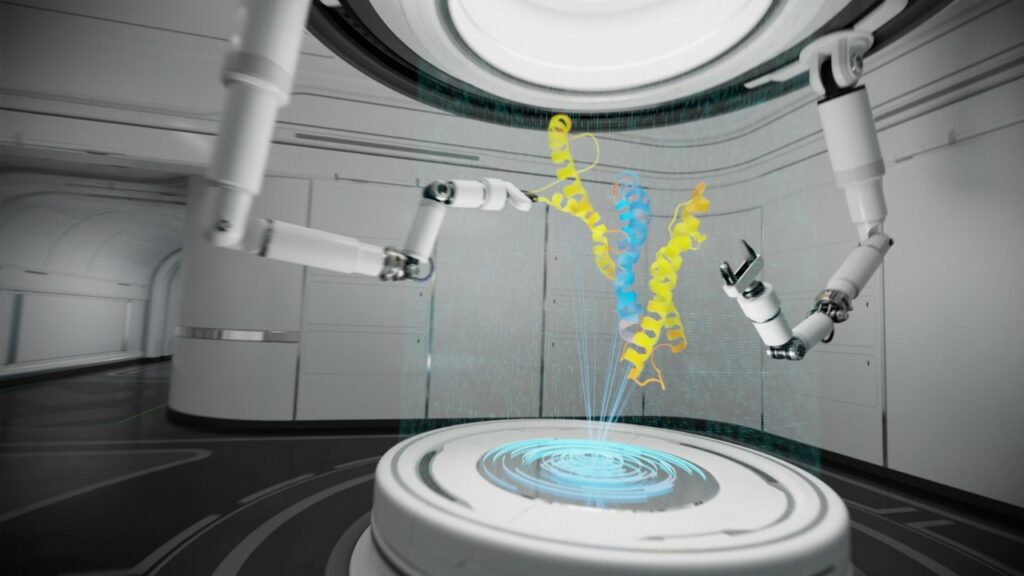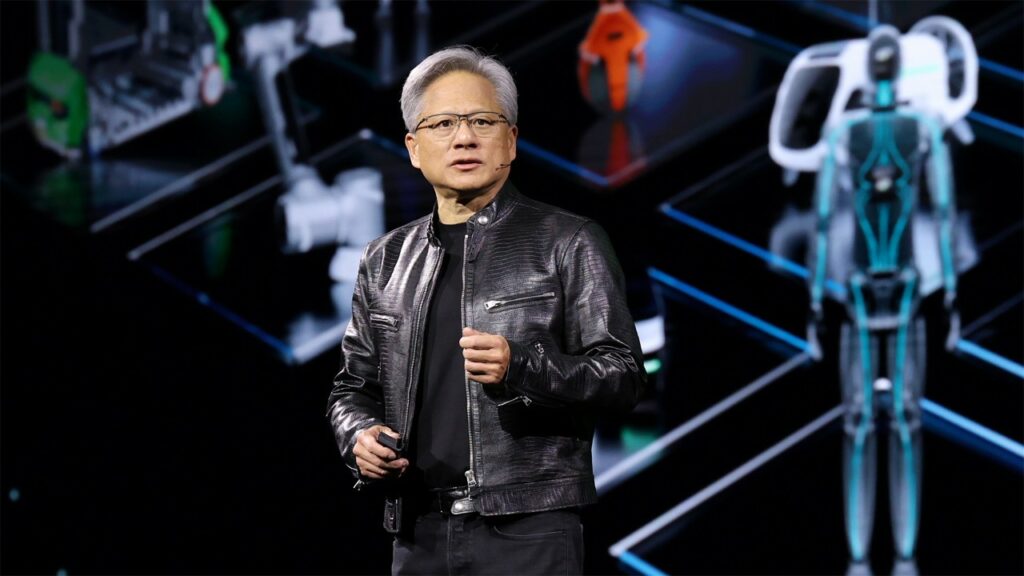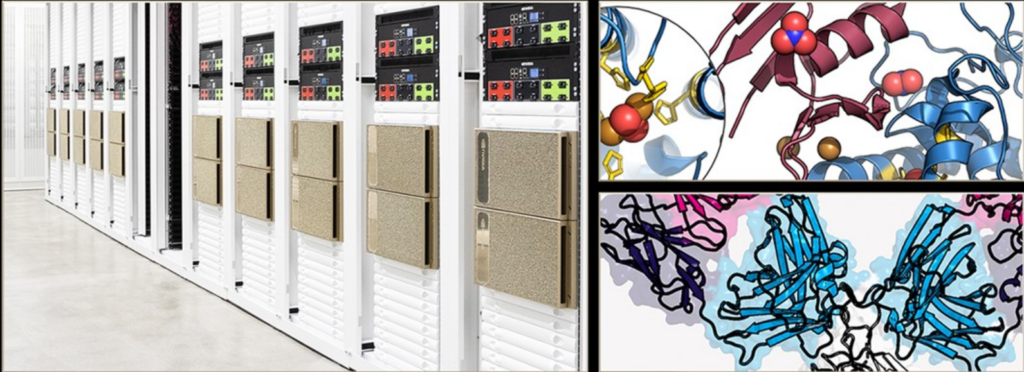Jensen Huang, born in Tainan, Taiwan, in 1963, is the co-founder, president, and CEO of NVIDIA. His innovative mindset and leadership have propelled NVIDIA to the forefront of the global graphics processing unit (GPU) and artificial intelligence (AI) technology sectors. Under his direction, NVIDIA has driven technological innovation, impacting various industries. Huang is dedicated to merging cutting-edge technology with market demands, resulting in revolutionary advancements that have transformed not only the gaming industry but also AI, autonomous driving, and healthcare.
Huang’s family moved to Thailand when he was five, giving him a diverse cultural perspective. Later, he and his brother were sent to the Oneida Baptist Institute in Kentucky, where the boarding school experience honed his resilience and adaptability. Huang earned a bachelor’s degree in electrical engineering from Oregon State University and a master’s degree from Stanford University, establishing a strong foundation for his future innovations in technology. During this period, he began to focus on how technology could drive sustainable development. He firmly believes that technology can provide economic benefits while addressing environmental issues, a conviction that has prominently influenced his leadership at NVIDIA.
Jensen Huang once said, “Technology is the engine of human development. We have a responsibility to ensure that this engine not only drives economic growth but also promotes social and environmental sustainability. This principle not only guides NVIDIA’s development but also sets an example for the global technology industry.”
From Passion for Technology to Future Visions
Huang’s journey is marked by challenges and opportunities. His early passion for technology and innate talent helped him excel in his academic and professional life. He worked at companies like LOGIC and AMD, gaining valuable experience and connections that laid the groundwork for founding NVIDIA in 1993 with Chris Malachowsky and Curtis Priem. Initially focused on the gaming graphics card market, NVIDIA revolutionized the industry with the launch of the GPU in 1999, boosting the PC gaming market. NVIDIA’s CUDA platform further transformed parallel computing, leading to significant advancements in scientific research and AI, solidifying NVIDIA’s place in the tech world. Huang believes, “NVIDIA was born from a love of technology and boundless imagination about the future.”

Technological Innovation and Sustainable Development
While driving technological innovation, Huang also emphasizes sustainable development. He believes technology should enhance lives while being environmentally responsible. Under his leadership, NVIDIA has taken proactive measures to reduce carbon emissions, promote renewable energy, and improve product energy efficiency. “Our goal is to combine cutting-edge technology with sustainable development to create a better and more sustainable world for the future,” Huang states.
NVIDIA’s sustainability strategy also involves caring for employees and communities, actively promoting corporate social responsibility (CSR) initiatives, and supporting various social welfare activities, including education, healthcare, and community building. Huang emphasizes, “We strive to be not only a technology leader but also a role model for social responsibility.” These efforts have not only enhanced NVIDIA’s brand image but also made substantial contributions to social sustainability.
Flat Management and Creative Culture
Huang is known for his dynamic leadership style, favoring a flat management structure where he directly manages about 50 top employees, emphasizing innovation and accountability. “I believe that those who report directly to me should be the best and require minimal oversight,” he says. This approach fosters an innovative culture and a high sense of responsibility within NVIDIA, enabling the company to constantly push technological boundaries. He believes successful leaders should encourage team creativity and provide support and guidance when needed. His leadership philosophy has made NVIDIA a vibrant and creative company, attracting top talent globally.
NVIDIA’s innovative culture permeates all levels of the company, from engineering to marketing. Huang encourages employees to challenge traditional thinking and explore new possibilities, establishing multiple innovation labs where employees can freely experiment. This supportive environment has made NVIDIA an innovation hub, attracting top talent. He also advocates for cross-departmental collaboration, believing that combining expertise from different fields can spark more innovation.

Market Expansion through Technological Innovation
Under Huang’s leadership, NVIDIA has evolved from a graphics card company to a tech industry powerhouse. Its GPUs are critical in AI research, data centers, and autonomous vehicles. By 2024, NVIDIA’s market value reached $3 trillion, solidifying its leadership in the AI revolution. Huang states, “Our success comes from constantly challenging ourselves and pursuing excellence.” NVIDIA remains committed to technological innovation and maintains competitiveness by continually exploring new markets. Its innovations extend beyond GPUs to AI, data centers, and autonomous driving, achieving breakthroughs in various industries.
NVIDIA collaborates with leading tech companies and research institutions to drive innovation. For example, NVIDIA partnered with Microsoft to integrate its GPU technology into the Azure cloud platform, enhancing cloud computing performance and efficiency. Additionally, NVIDIA collaborates with Tesla, providing advanced computing platforms for its autonomous vehicles, achieving higher safety and performance levels.
In public speeches, Huang emphasizes that market expansion depends on continually understanding customer needs and rapidly iterating products to meet those needs. “Our customers are global, and they need efficient, reliable, and innovative solutions. Our mission is to meet these needs through technological innovation and help them achieve success,” he says. Under his leadership, NVIDIA has developed specialized products for various industries, from healthcare to finance to entertainment, each witnessing NVIDIA’s deep technological impact.
Renewable Energy Integration for Sustainable Development
NVIDIA has made significant efforts in sustainable development, including actively adopting renewable energy, aiming for 65% of its energy to come from renewable sources by 2025. NVIDIA’s Cambridge-1 supercomputer uses 100% renewable energy and ranks high on the Green500 list. NVIDIA also focuses on improving data center energy efficiency and implementing sustainability standards in design, construction, and operation. Huang emphasizes, “We strive not only for technological excellence but also for positive environmental and social impact.”
NVIDIA’s sustainability strategy includes resource recycling and reducing electronic waste. The company has established a global recycling program to ensure that old products are safely recycled and reused, minimizing environmental impact. Huang notes, “Our goal is not only to lead in technology but also to set an example in environmental protection.” This philosophy is embedded in every business decision at NVIDIA, striving for environmental friendliness and sustainability from product design to supply chain management.

Giving Back to Society
Huang’s contributions extend beyond the corporate world through significant charitable donations, including $50 million to Oregon State University for a supercomputing research center and $30 million to Stanford University for an engineering center. His efforts have earned him numerous honors, including being named among the world’s best CEOs by Fortune and The Economist and listed in TIME magazine’s 100 most influential people. Huang believes, “Success is not just about personal and corporate achievements; it should also give back to society and benefit others.”
Huang particularly values donations to education, believing that education is key to societal change. By donating large sums to several universities, he has supported countless students and researchers’ innovation and development. Moreover, he promotes NVIDIA employees’ active participation in community service, advocating the idea that “giving back to society is everyone’s responsibility.”
NVIDIA’s social responsibility programs also include supporting science, technology, engineering, and mathematics (STEM) education, especially among disadvantaged groups. Huang states, “We hope to provide educational resources and opportunities to more young people, allowing them to engage in and contribute to technological innovation, nurturing future tech talent.” NVIDIA collaborates with schools and educational institutions worldwide, offering scholarships, internships, and educational resources to help students realize their tech dreams.
AI Technology Drives the Green Revolution
Huang notes, “Our mission is to drive the world towards sustainable development through technological innovation.” NVIDIA’s AI technology plays a crucial role in sustainable development. For example, the company partnered with Tomorrow.io to develop AI models for weather forecasting, helping businesses and governments address climate change risks. NVIDIA also collaborates with FortyGuard to use AI to measure urban heat islands, aiding urban planners and public health officials in developing more sustainable urban strategies.
NVIDIA’s AI technology is also pivotal in energy management and resource optimization. Its AI systems can monitor and adjust data center operations in real-time, ensuring computational needs are met while minimizing energy consumption. This not only helps reduce operational costs but also significantly lowers carbon emissions, promoting environmental protection.
In agriculture, NVIDIA’s AI technology shows great potential. The company collaborates with multiple agri-tech firms to develop smart agriculture systems, using AI for precision irrigation, pest monitoring, and soil health assessment, thereby increasing crop yields and reducing resource consumption. Huang believes these innovative applications can help agriculture achieve a more sustainable development model, addressing global food security challenges.
In healthcare, NVIDIA’s AI technology has transformative impacts, collaborating with various medical institutions to use AI for disease prediction, personalized treatment plans, and medical imaging analysis. These technologies improve healthcare services’ efficiency and accuracy, providing strong support for the rational allocation and management of medical resources, thereby enhancing overall public health levels.Under Huang’s leadership, NVIDIA has become synonymous with technological innovation and a model of sustainable development. He continues to drive advancements in AI and computing, profoundly impacting various industries and society. Through these efforts, NVIDIA not only shapes the future of the tech industry but also makes significant contributions to global sustainable development. Huang and NVIDIA’s story illustrates the harmonious coexistence of technology and the environment, inspiring us to work together to create a better future.“

Recommend for you: